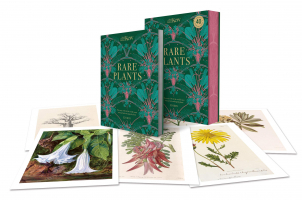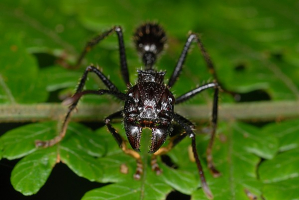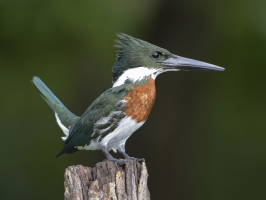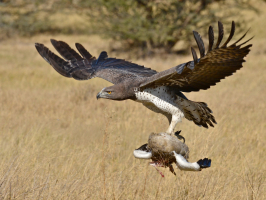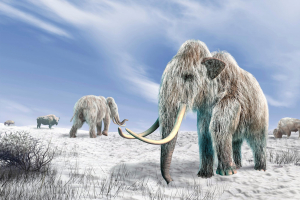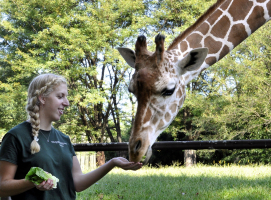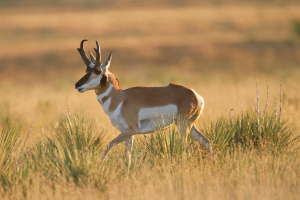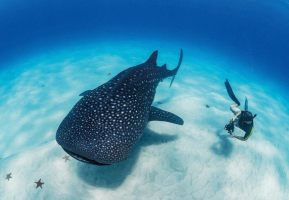Top 10 Amazon's Rainforest Endangered Species
More than 40,000 plant species, over 4,000 animal species, including thousands of birds, butterflies, and animals, as well as over 3,000 freshwater fish ... read more...species, may be found in the Amazon. The Amazon Basin is home to the world's richest biodiversity and is also the world's largest rainforest, which makes it extremely important for absorbing and storing carbon dioxide in the face of rising global carbon emissions. But as a result of uncontrolled deforestation and an increase in wildfire incidents brought on by climate change, more natural habitats are being destroyed every day, endangering the existence of numerous significant and rare species. Here is a list of Amazon's Rainforest Endangered Species, let's find out!
-
The jaguar is the largest cat in South America. It is the largest feline species in the Americas and the third-largest in the world with a body length of up to 1.85 m and a weight of up to 96 kg. This animal is a lone creature, a fair swimmer, and a night monster. This large feline group is the sole surviving member of the Panthera suborder native to America. Although a melanistic black coat occasionally appears in some individuals, this animal's obviously imprinted coat features bright yellow to tan-hued fur covered by stripes that progress to rosettes on the flanks. The jaguar's powerful chomp allows it to pierce the carapaces of turtles and turtles, and it may even kill prey by simply biting through the skull between the ears of mammals to cause fatal damage to the brain.
Habitat loss – jaguar now occupies less than half of its historical range, growing conflict with farmers and ranchers, as well as climate change which has increased the risk of wildfire. Reduced water resources also have driven the animal to be an Amazon rainforest endangered species.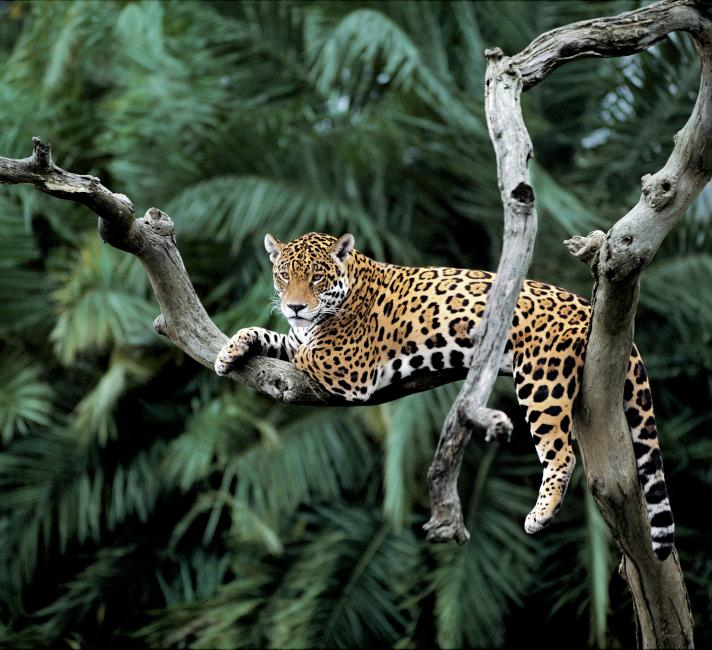
Via: WWF 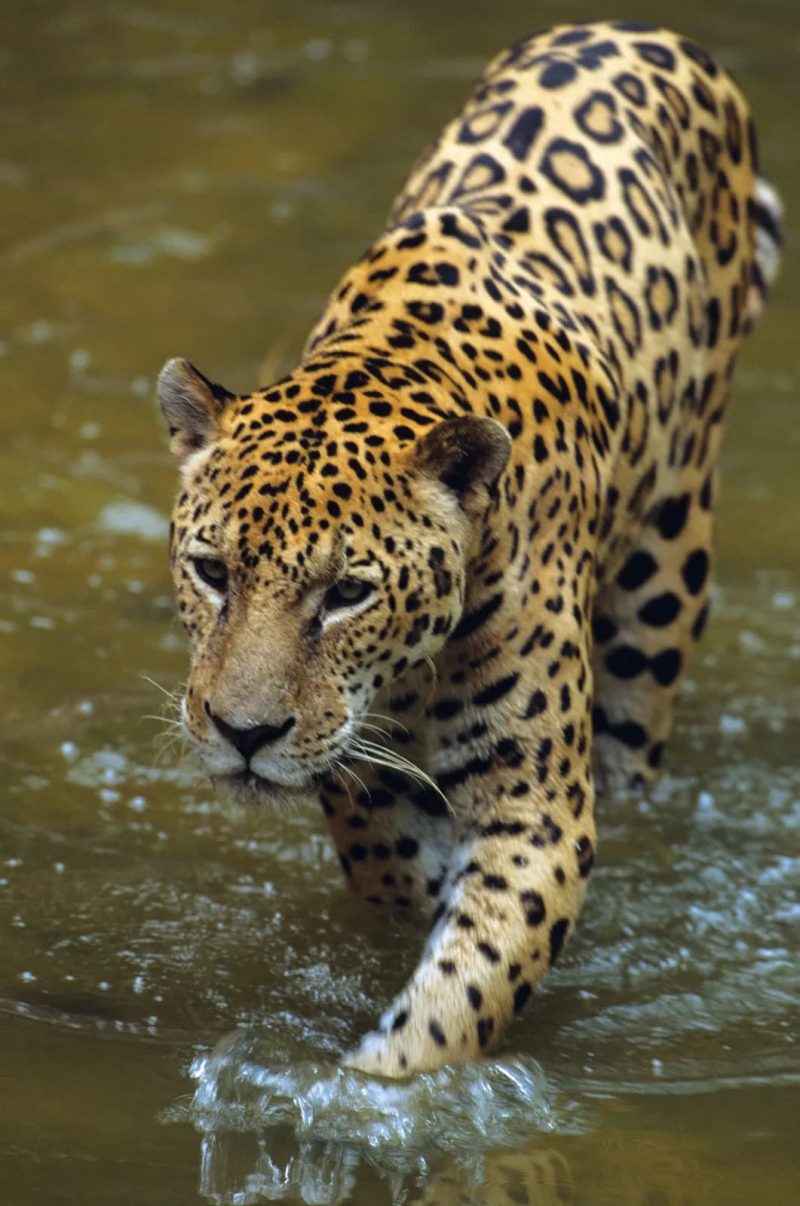
Via: Encyclopedia Britannica -
The Golden Lion Tamarin is one of many monkey species that are exclusive to Brazil's Amazon rainforest. Its vividly orange mane is where its name, which was amusingly first uttered by Madame de Pompadour in 1754, comes from. The tamarin primarily inhabits trees, moving between branches to forage for food, insects, and sometimes birds.
The animal's original habitat, however, has been obliterated by deforestation caused by the logging and agricultural industries' explosive rise. The species' survival is in danger since only 2 to 3 percent of its natural rainforest habitat is still present. The Golden Lion Tamarin is currently listed as an endangered species by the International Union for Conservation of Nature (IUCN).
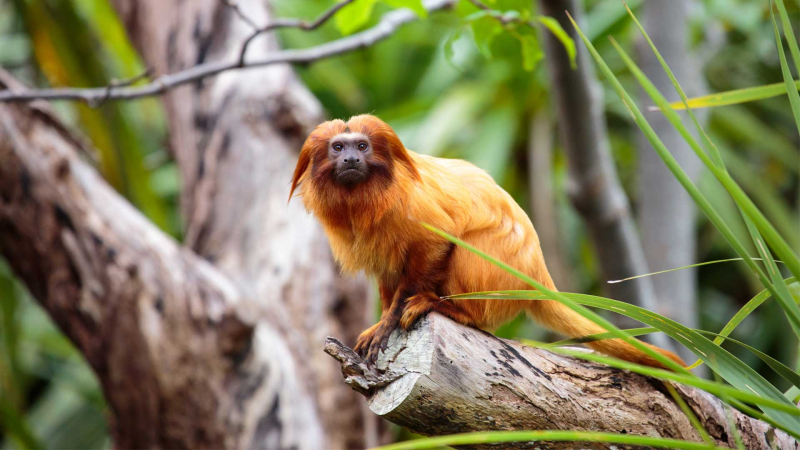
Via: Auckland Zoo 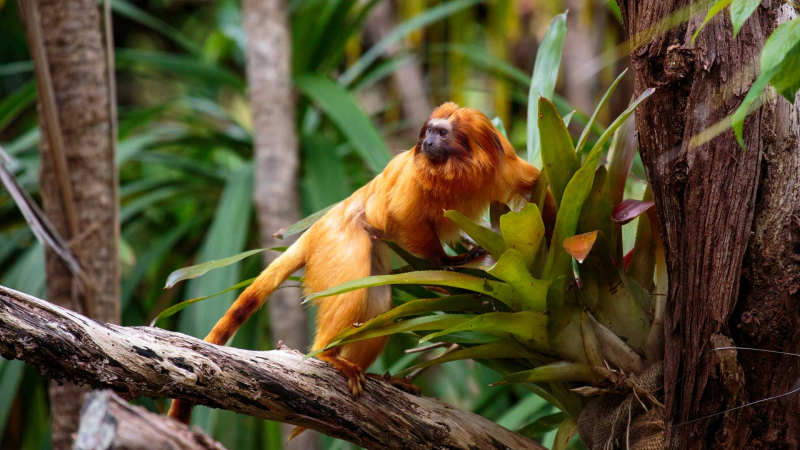
Via: Auckland Zoo -
The South American Tapir is a herbivorous mammal with a form resembling a pig, and it mostly eats clay licks. This animal supports the diversity of forests and the overall health of the ecosystem by acting as a disperser and predator of tree seeds. It is a keystone species. However, combined with unlawful hunting and poaching, habitat degradation from logging operations and deforestation have been this species' major concern, causing its population numbers to drastically decline.
In Peru, the tapir is currently in danger of going extinct, while in the Amazon region of Argentina, tapir numbers have decreased by an estimated 60% during the past 200 years. Due to the species' broad habitat requirements and the fact that many of its protected areas are flanked by unprotected private property, conservation efforts have struggled to aid in the recovery of the species.
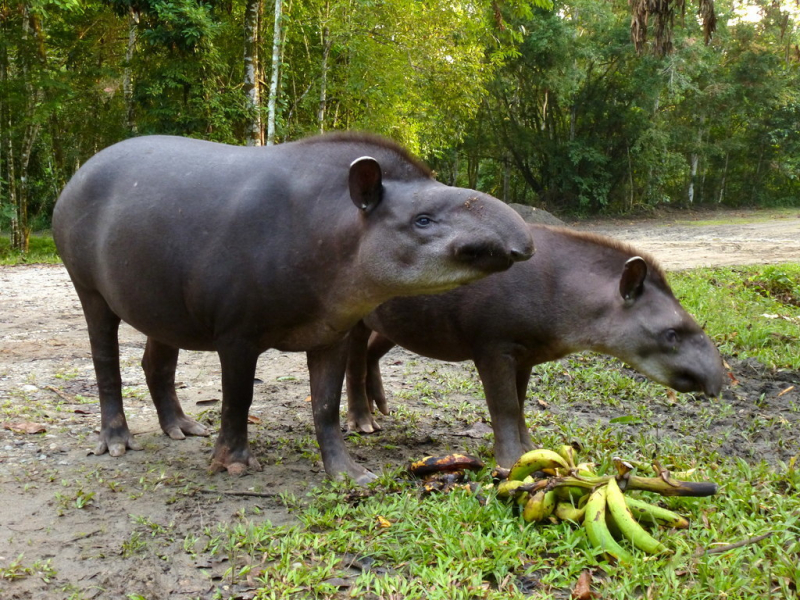
Via: iNaturalist 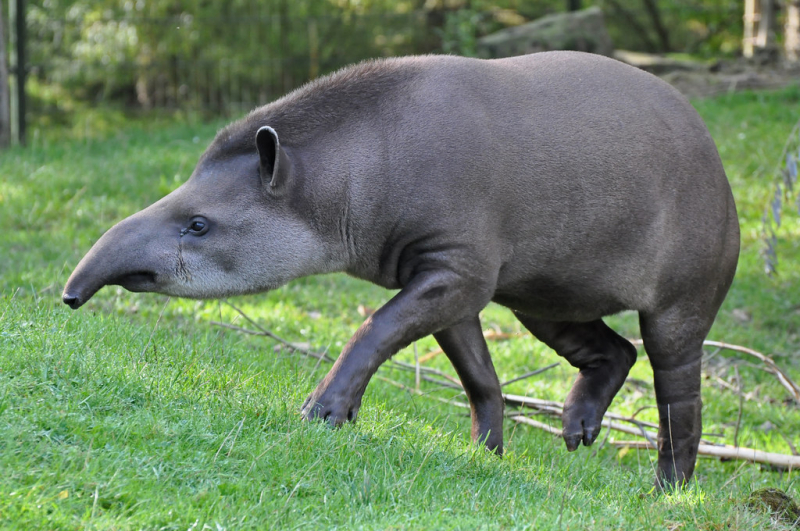
Via: Flickr -
The giant otter, as its name suggests, is the largest species of weasel. It is frequently seen in the Peruvian Amazon jungle, where it eats fish and crustaceans. It can discern the movements of prey in the water thanks to its safe stubbles and keen vision. Otters generally gain from fish, playing a key role as hunters in biological systems.
Similar to other vulnerable species, its population has declined to alarmingly low levels as a result of habitat degradation and unlawful poaching. The Amazon's mining and agricultural operations, as well as overfishing in the otters' habitats, pose significant risks to their survival. Although the species has been protected by the Convention on International Trade of Endangered Species (CITES) since 1973, protecting and conserving it can be challenging due to the enormous region that this animal needs.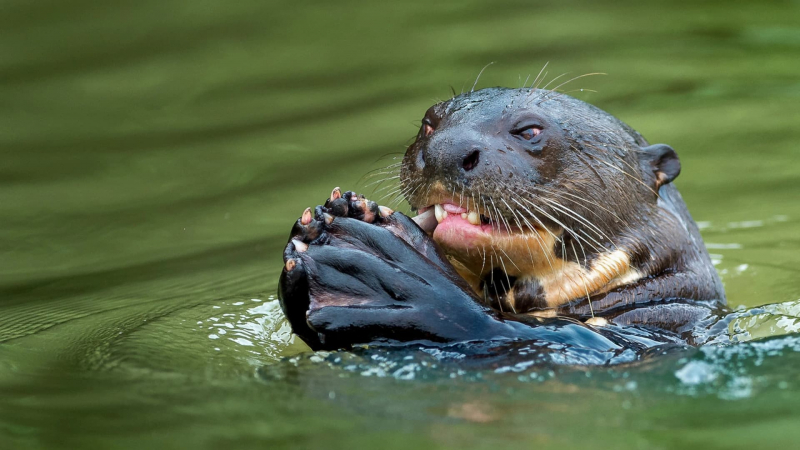
Via: Wetlands International 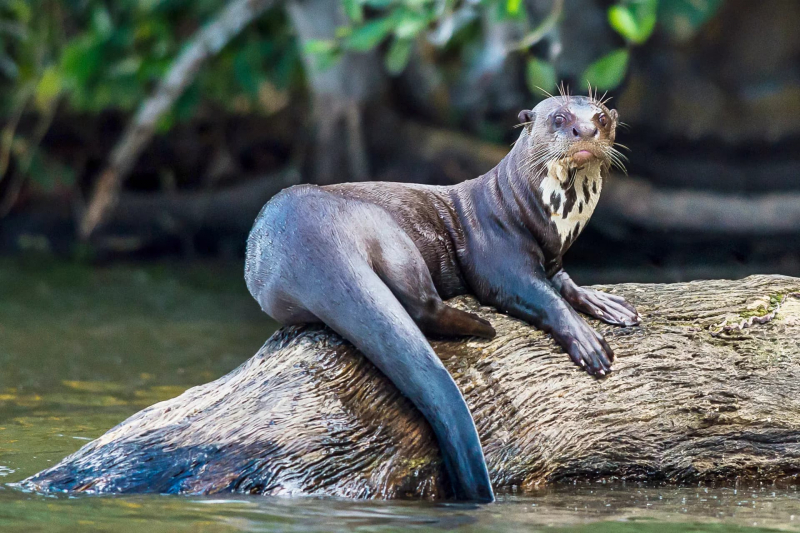
Via: iStock -
The Uakari is a little type of monkey, local to the tropical rainforests of South America, where they will more often than not be found in the clammy wilderness that is near water. These animals are generally notable for their bald face which most regularly goes from pink to dark red in variety. The Uakari Monkey plays a significant role in seed distribution and is especially essential because it can transfer seeds farther than smaller animals.
The Uakari tribe, which once inhabited the Amazon but is now sadly gone, inspired the naming of this particular monkey. Although massive deforestation has destroyed most of the monkey's native habitat and made it challenging for the animal to hunt and nest, alarming trends indicate that the monkey is on course to follow its namesake. Additionally, some of its populations have been prey to unlawful hunting.
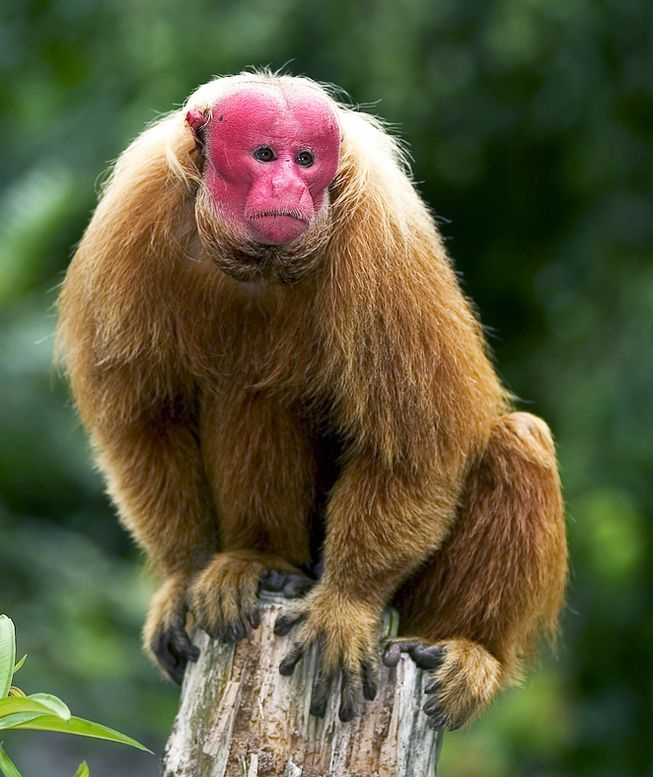
Via: Pinterest 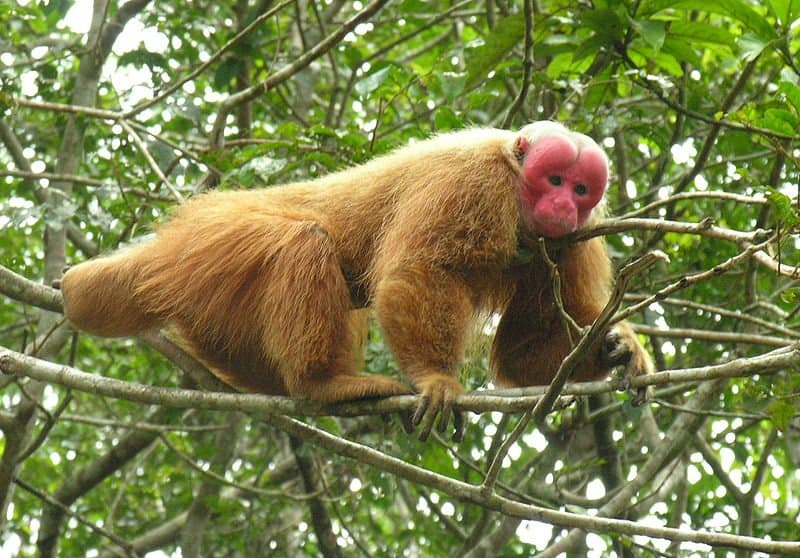
Via: National Geographic -
The white-cheeked spider monkey is a type of arachnid monkey, a sort of New World monkey, endemic to Brazil. It goes around the wilderness shelter in small family groups of two to four creatures, which are a component of larger groups of twenty to thirty-two creatures. This monkey enjoys leaves, blooms, organic materials, bark, honey, and tiny insects. It also plays a crucial role in the spread of forest tree seeds. A female gives birth to a child after a 230-day incubation period.
The creature's status as a protected species has been determined to be "jeopardized" by the Worldwide Association for the Preservation of Nature. Their residences are located on higher ground in the tropical bush. The white-cheeked insect monkey was listed as an imperiled species in 2008 after a survey revealed that over the course of three generations, the population had decreased by half. Hunting and the natural environment's unfavorable conditions can be blamed for this reduction. As soybean growth has expanded, this pattern is expected to continue. Additionally, parts of their home have been destroyed to make room for big interstates and a lot of rainforests.
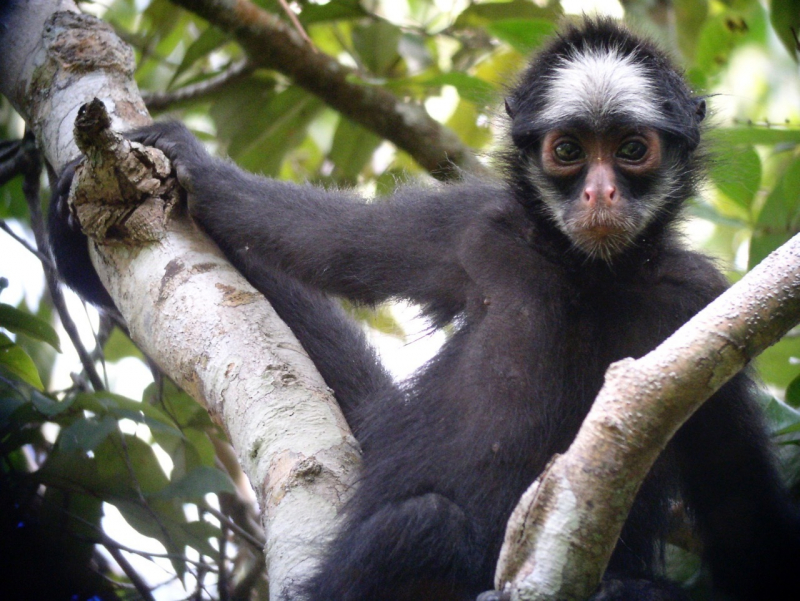
Via: iNaturalist 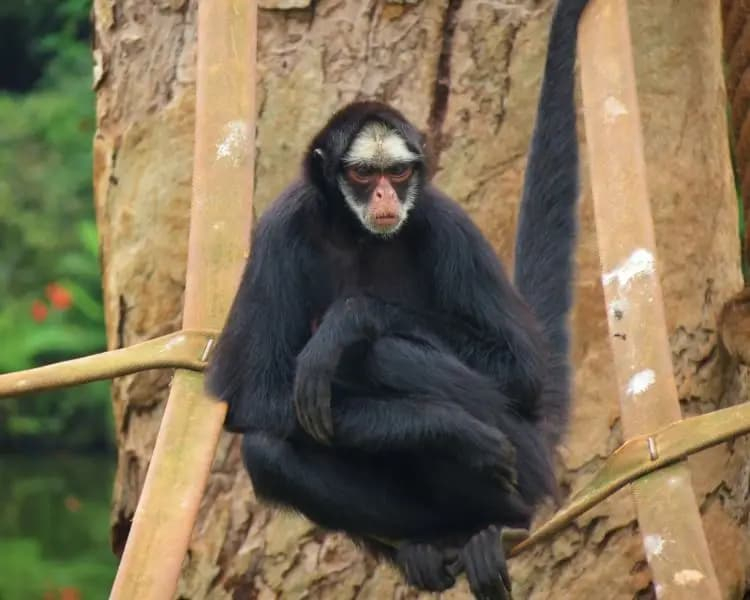
Via: Animalia.bio -
Also known as the Blue Macaw and the protagonist of the film Rio, the Hyacinth Macaw (and the largest flying parrot in the world) faces growing threats and pressure as its natural habitats and resources continue to shrink from land clearing. They were formerly widely distributed throughout Brazil and almost always built their nests in the enormous cavities of old Manduvi trees.
Currently, they are only present in a few isolated areas of the Amazon, most notably in central Pará, where human activity has resulted in the loss of 203,460 hectares of trees just this year. In addition to deforestation, the parrot has faced challenges from the exotic pet trade and hunting for its distinctive feathers. Though the animal is still considered only “vulnerable” by the IUCN, many environmentalists believe the species is at the precipice of becoming endangered.
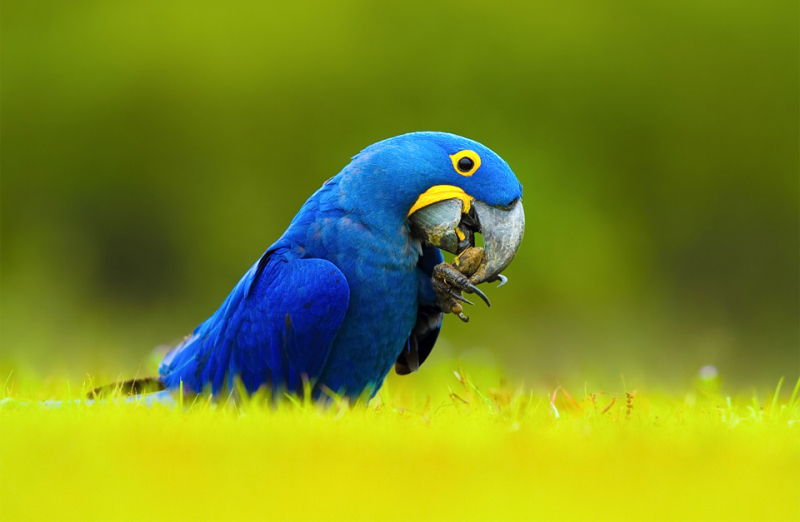
Via: eBird 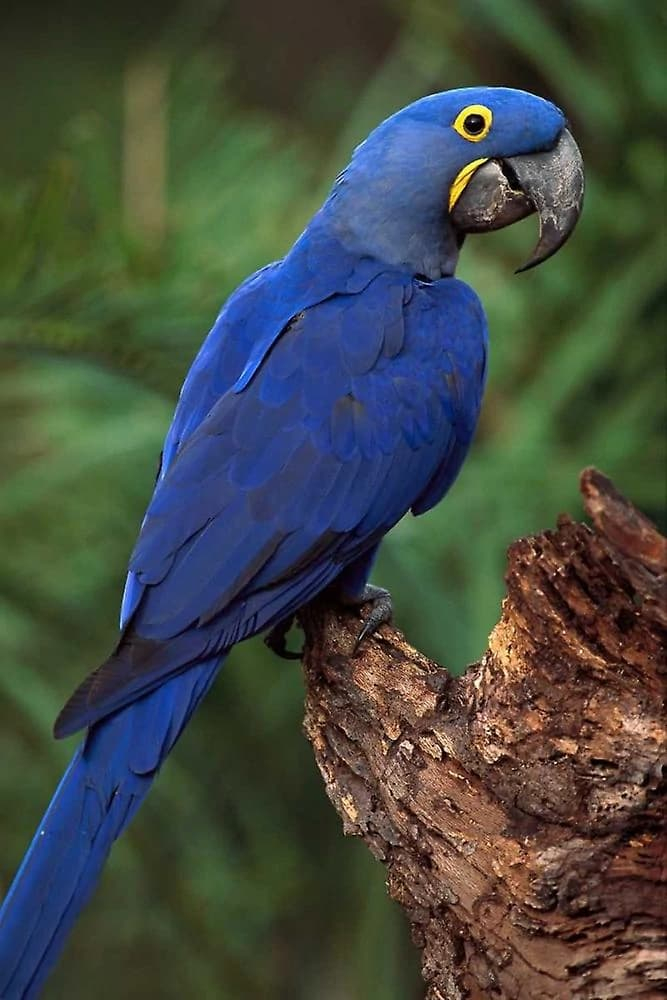
Via: Birds Wiki -
Poison dart frogs come in more than 100 different species, the majority of which are found in the Amazon. Brightly colored poison dart frogs, which can be yellow, copper, gold, red, blue, green, or a combination of those colors, are notoriously toxic, and their eye-catching coloring serves to deter predators. They differ from other frog species in that they are active during the day rather than at night.
Due to the Native Americans' usage of their toxic secretions to poison blowdart tips, these amphibians are frequently referred to as "dart frogs". However, only four of the more than 170 species - all of which are from the genus Phyllobates, which is distinguished by the comparatively large size and high levels of toxicity of its members - have been identified as being utilized for this purpose.
With a few arboreal species, the amphibian is primarily terrestrial, and habitat loss has increased food competition and the risk of predation, bringing these frogs closer to extinction. Scientists also found chytridiomycosis, a bacterial disease found in amphibians, to have killed thousands of animals each year, which resulted in the extinction of some species.
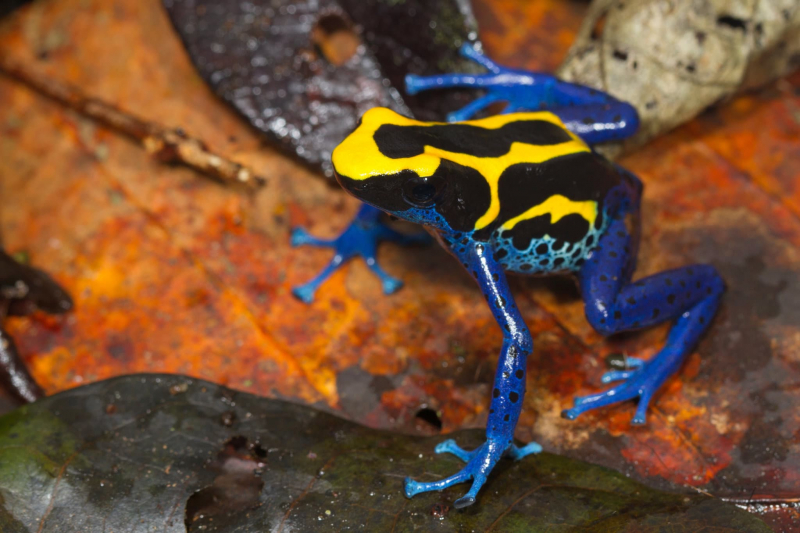
Via: The New York Times 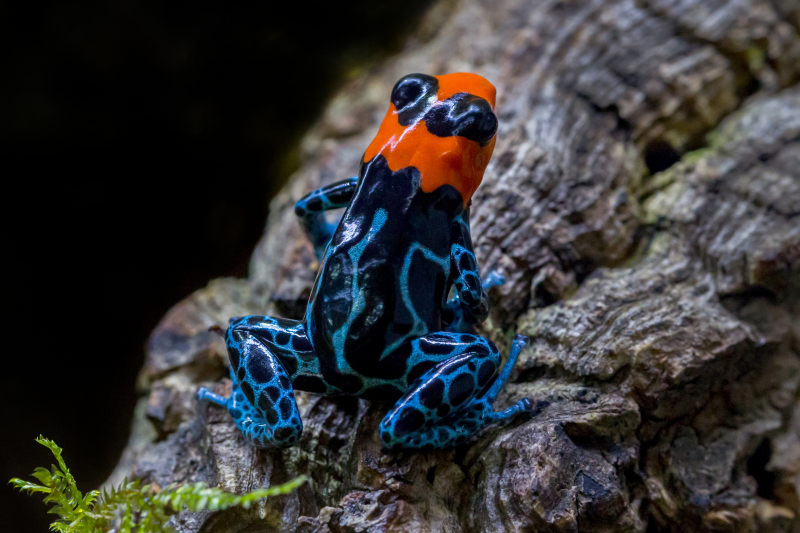
Via: McGill University -
The pink amazon dolphin, also known as the pink river dolphin, can be found in all of the Amazon river basins in Bolivia, Brazil, Colombia, Ecuador, Guyana, Peru, and Venezuela. It only inhabits freshwater. The Amazon river dolphin is the largest species of river dolphin, with mature males growing to a length and weight of 2.5 meters (8.2 feet) and 185 kilograms (408 lb), respectively.
The moniker "pink river dolphin" comes from the pink tint that adults develop, which is more pronounced in males. Males are 16 percent longer and weigh 55 percent more than females, making sexual dimorphism quite obvious. They consume up to 53 different types of fish, including croakers, catfish, tetras, and piranhas, making them one of the toothed whales with the most varied diets. They also eat other creatures like freshwater crabs and river turtles.
Despite being protected in Brazil, poachers relentlessly kill dolphins for their fatty blubber, which is then used as bait to catch predatory catfish. As a result, the dolphin population continues to halve every ten years and is currently classed as an endangered species by the IUCN. In other regions of the Amazon, water pollution and habitat fragmentation caused by dam construction pose growing risks to dolphin populations. Since female river dolphins typically give birth to just one calf every four to five years, population growth can be sluggish and challenging.
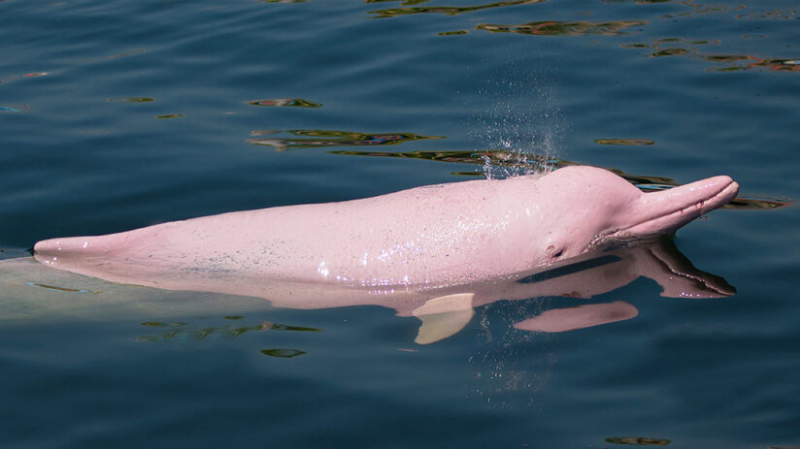
Via: World Wildlife Fund 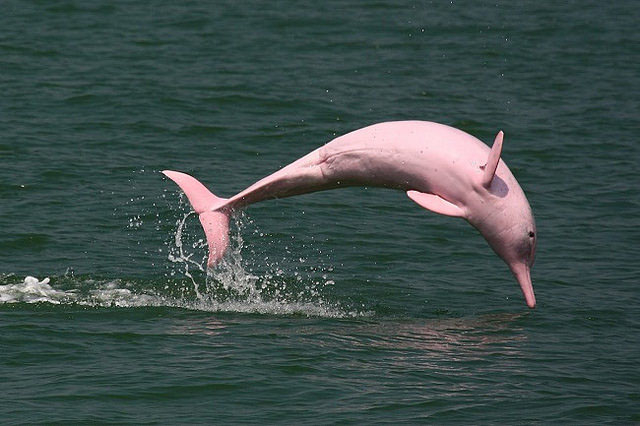
Via: Galapagos Insiders -
One of the most unusual animals in the Amazon, the sloth is renowned for its slow movement. Its top speed is only 0.24 km/h, and it sleeps for almost 20 hours per day. This is due to the fact that, unlike other warm-blooded organisms, you are unable to maintain a constant internal temperature that can fluctuate between 24 and 33 °C at any given time. Surprisingly, the well-equipped critters are also excellent swimmers. They may jump into the water for an oar from their perches in the trees. Baby sloths learn what to eat by tasting their mother's lips.
Although not all species of sloths are endangered, they face a growing threat of habitat loss in the Amazon region due to severe deforestation. This problem not only affects the natural ecosystem but equally millions of indigenous people. Preserving this region should therefore be of utmost importance.
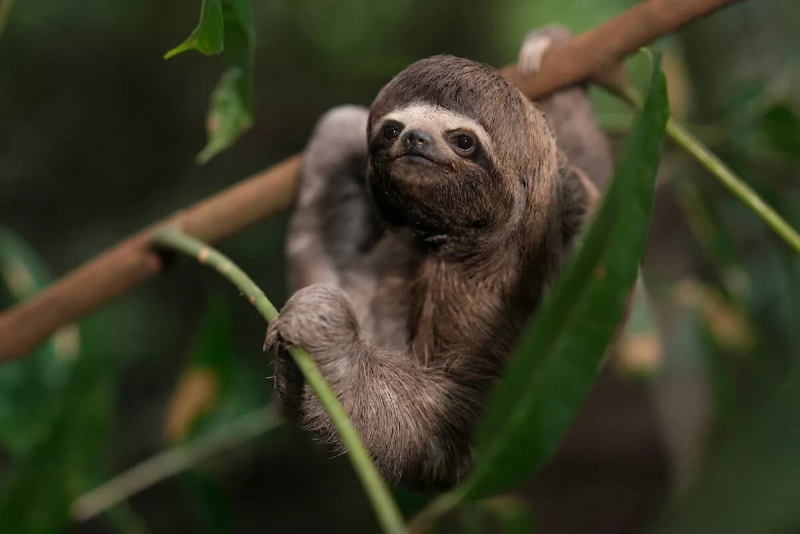
Via: Delfin Amazon Cruises 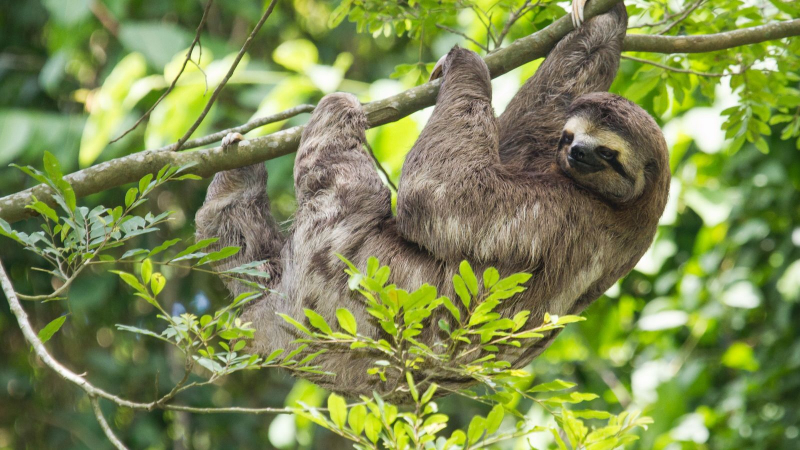
Via: National Geographic












